Worksheet Packets for Civics, World, & US History
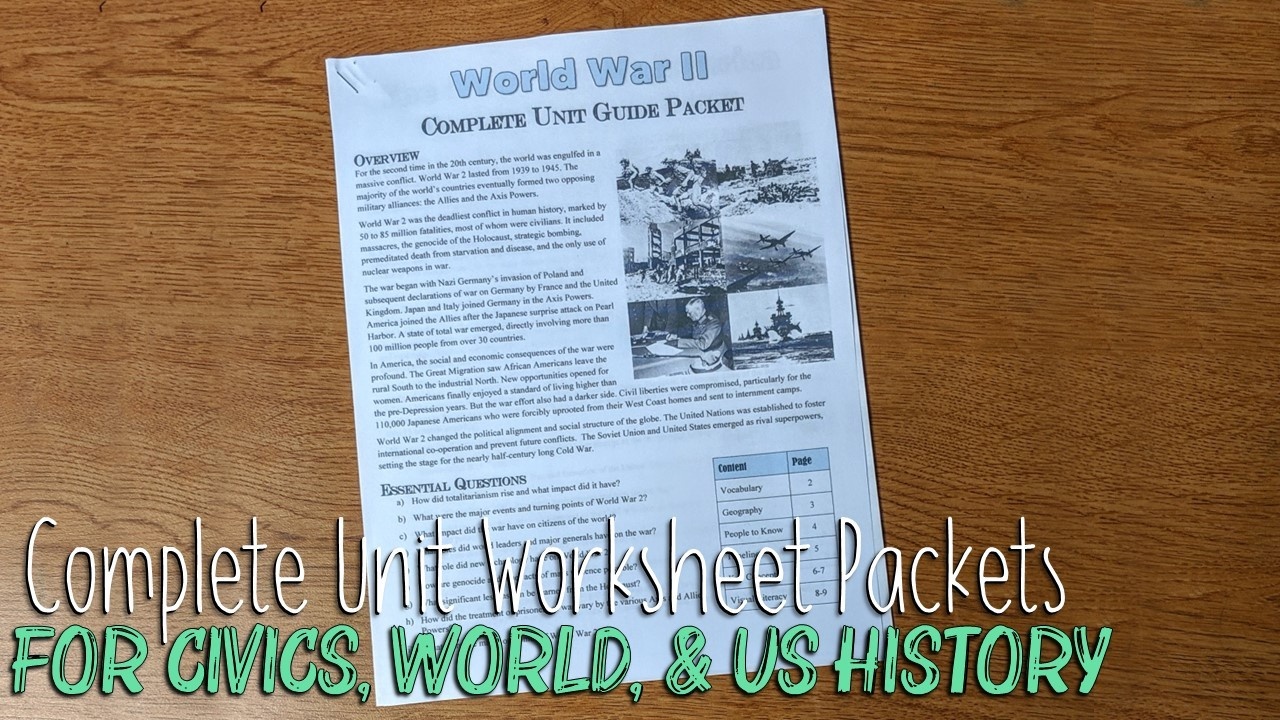
One of the most time and energy-saving strategies I started using in my social studies classroom was to employ unit guide packets for students.
These thorough 9-page packets were a huge help in a few ways:
- Printing the majority of student work at once each unit instead of each day.
- Students know exactly what they need to know for the test and have it in one place.
- If I'm ever out sick, students can just work on their packets.
They took a long while to create, but I now have packets for every unit in Civics/Government, World History, and US History. That's 48 total packets and over 400 pages of student worksheets!
Each one features an introductory reading, standards-based Essential Questions to guide the unit, and then 9 pages dedicated to vocabulary, geography, people, timelines, key concepts, and image analysis.

Here's a closer look at what's included on every page:
Unit Introduction
This page features a short reading on the unit that introduces students to the key ...
Students of History Subscription Preview
Are you curious about what's included with a Student of History subscription?
Well, let's take a look!
Here's a sneak peek of what your subscription will look like after you login. First, you'll be brought to your dashboard where you'll see the curriculum that you have. It could be Civics, World, or US History.
After clicking on your curriculum, you’ll see all the units that are included. You get immediate access to all of them immediately after signing up. So, no matter where in the curriculum your course begins, you can get started right away.
From there, just click on any unit you want to start with and you’ll see it is broken down by day. Most units are between 7-10 days long. That is based on longer block-scheduled classes. So, if you teach daily 45-minute classes, you might need to break up each day’s lesson over two periods.
The lessons are designed to be easy to understand quickly, so you don’t need to slog through a bunch of pages to find out how to teach with the mate...
Comparing Pandemics Lesson Plans: COVID, Plague, and the Spanish Flu
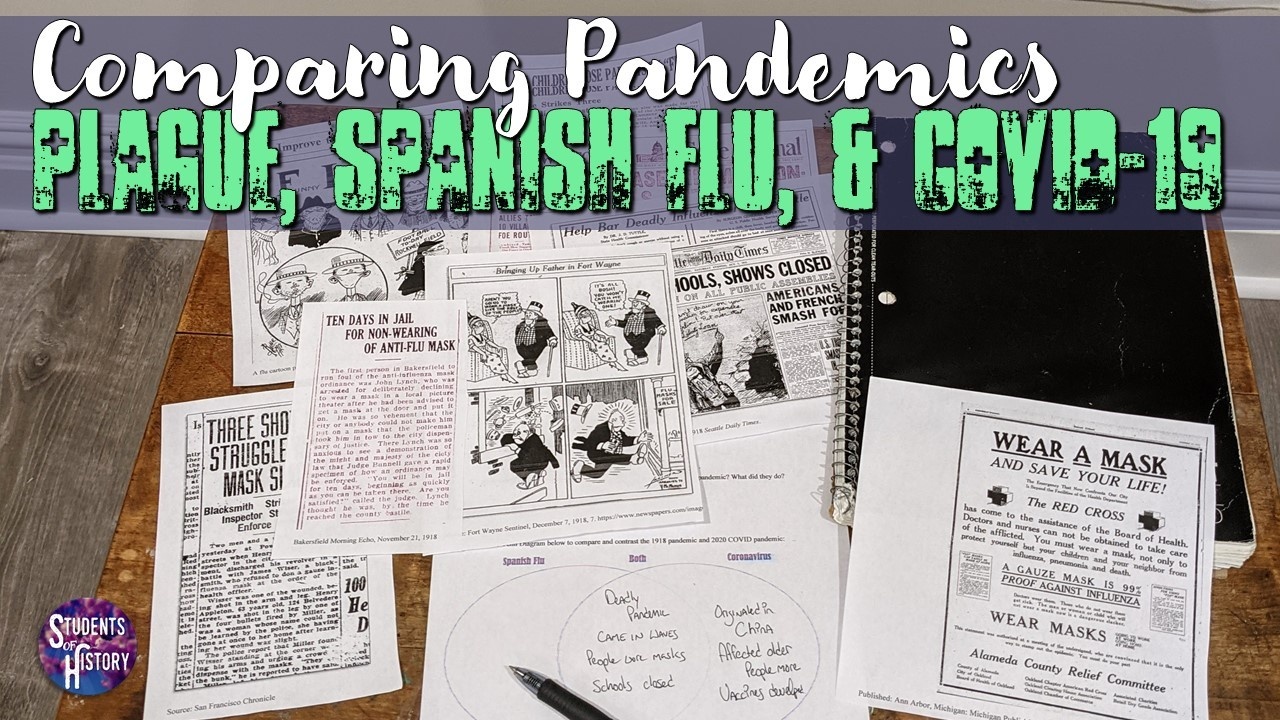
If you're teaching social studies through the COVID-19 pandemic, you've likely tried to connect this moment in history with events in the past from your curriculum.
Since I have both World History and US History, I wanted separate lessons that would allow students to see connections to history from what they have lived through.
To do this, I developed these two lessons. The first one is for US History and allows kids to analyze primary sources from the 1918 "Spanish Flu" pandemic. The second one for World History has students analyzing a primary source from the plague.
US History - The Spanish Flu of 1918 and Coronavirus
The 1918 Spanish Flu was one of the deadliest pandemics of all time. It affected nearly 1/3 of the entire world and killed millions.
It didn't develop in Spain, but earned the name because other nations censored any news of widespread sickness because of World War 1. Spain was neutral in the war and one of the few countries that accurately reported how deadly th...
Google Classroom Resources for World History
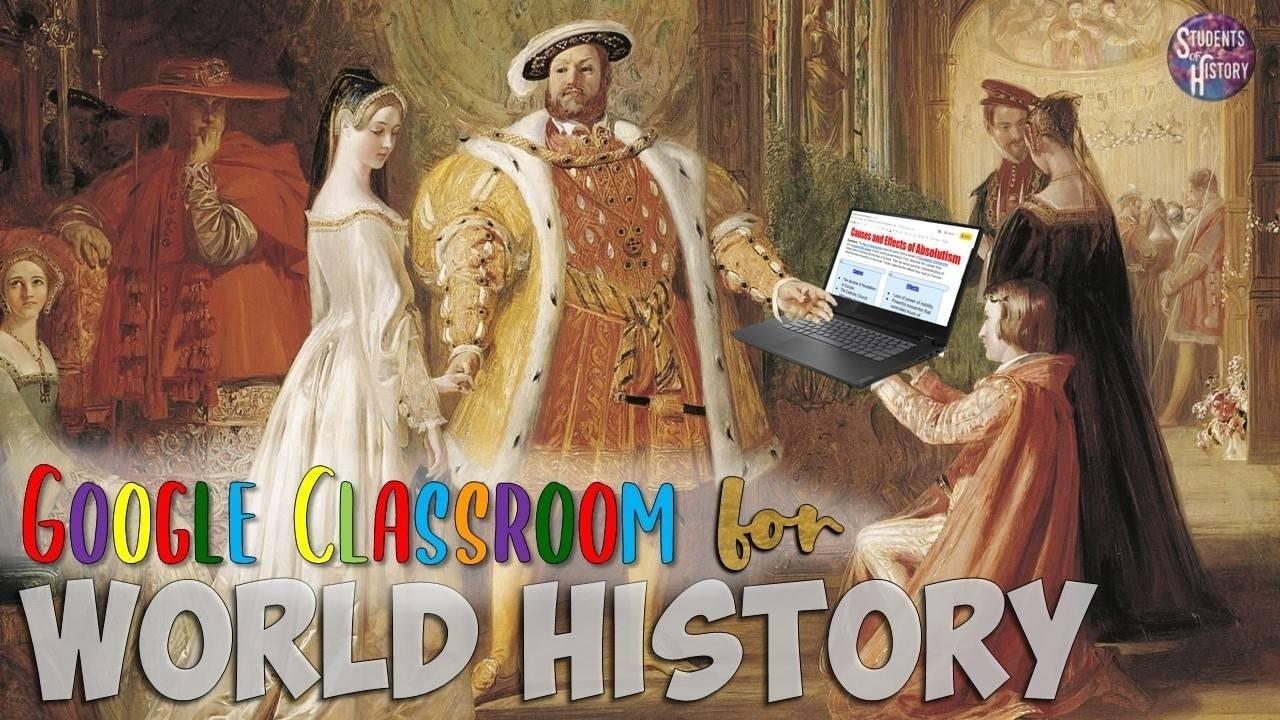
Before the scourge of COVID-19 thrust schools across the world headlong into Distance Learning, digital resources were already gaining use in classrooms. For a good reason also. When technology is used effectively, it’s an amazing tool for teaching World History.
If your Distance Learning experience was stressful or just mildly exhausting, there’s still many exceptional digital activities you can (and should) still be using with Google Classroom in a traditional school setting, through distance learning, or in a blended learning format.
I never ran a paperless classroom and don’t think I would ever go fully paperless. There’s too many assignments that lend themselves better to printable PDFs done by hand. I think Distance Learning taught us all the limits of teaching through technology.
However, I do incorporate Google Docs, Slides, and digital interactive activities in every unit of World History throughout the year. There are just so many amazing digital resources available tha...
World History Worksheets
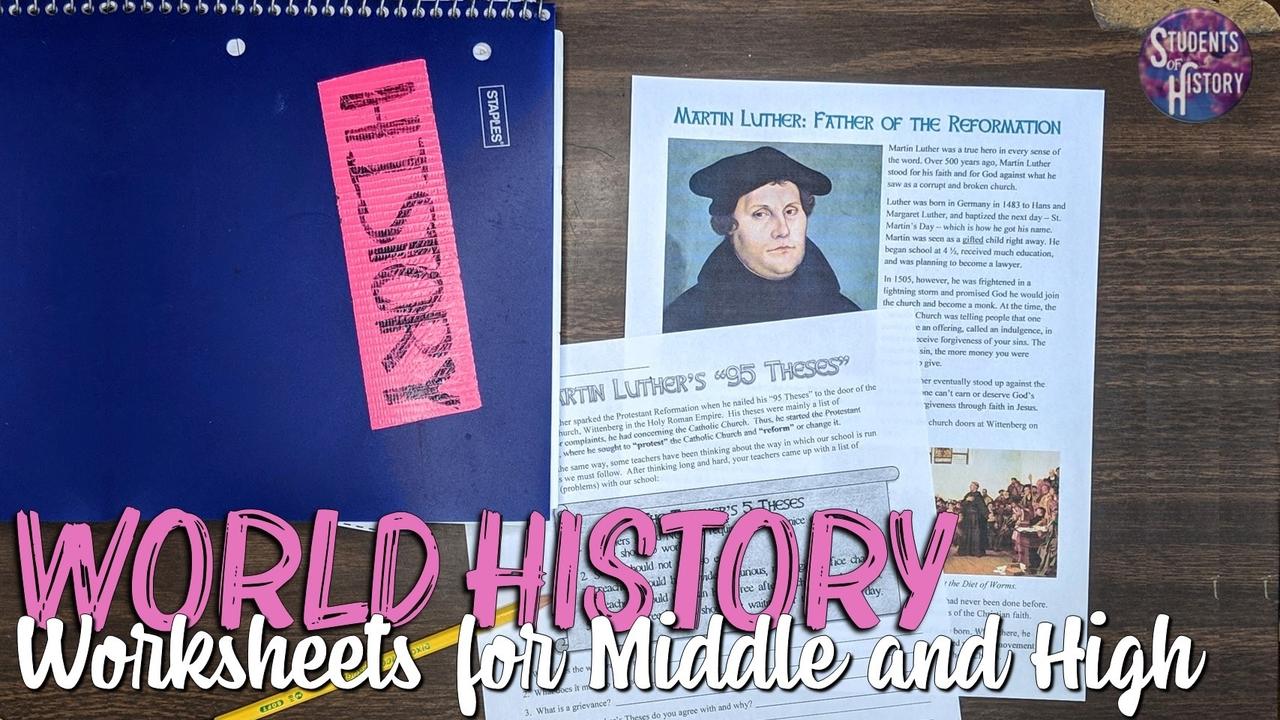
If you're a World History teacher looking for engaging assignments and worksheets for your high school or middle school classroom, I have tons to share, including this 30+ page packet of free assignments.
While they're sometimes maligned, worksheets can be great for helping students analyze primary sources, understand an event through a secondary source, or assess their skill in an area of social studies.
Our World History worksheets come in PDF format for easy printing and with Google Docs versions as well for easy implementation into Google Classroom.
They're also easy to differentiate across grades, ability levels, and for special education students with accommodations. The lesson plans our subscription provides help you to differentiate and select the best worksheets and activities for your students.
This could mean kids working together in pairs, cooperative learning groups, or mixed-ability pairings to help give you more time to provide support to all your students.

70 World History Primary and Secondary Source Activities
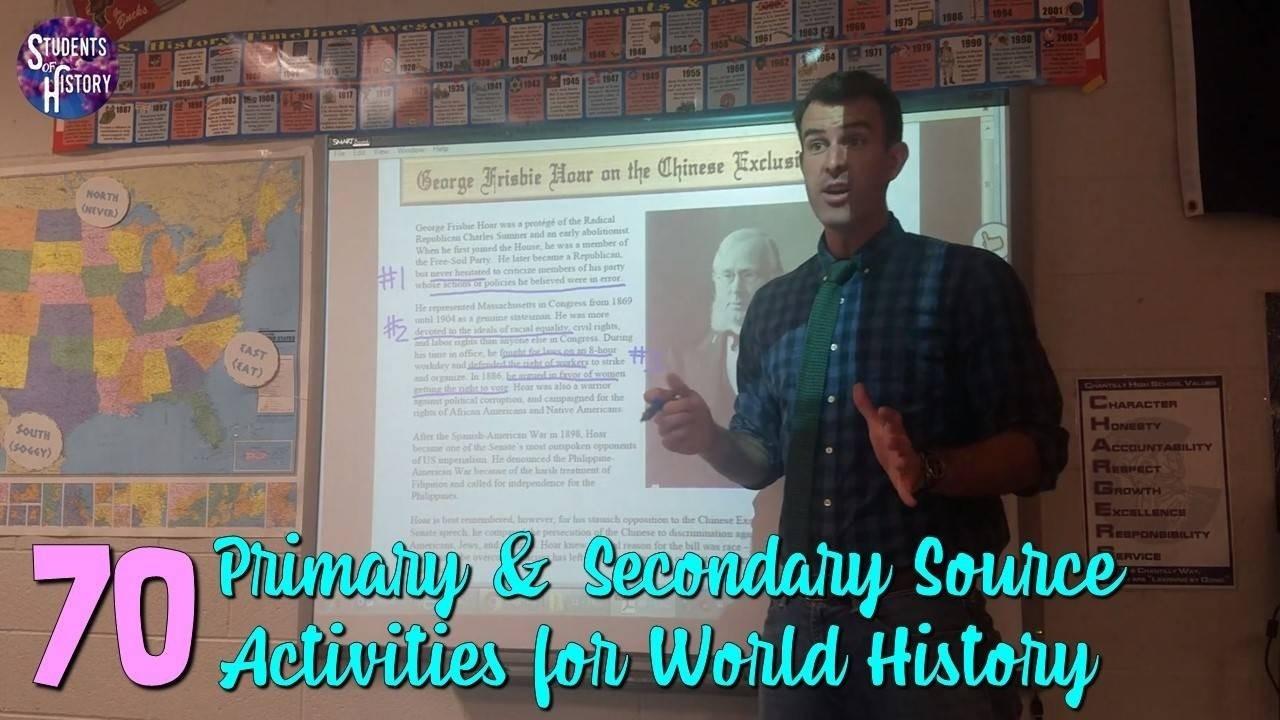
The benefits of using primary sources in the classroom have long been known to social studies teachers and education leaders. Whereas bias can misinformation can sometimes be found in textbooks or online sources, primary source activities allow students to directly analyze and interpret history.
Primary Sources expose students to different perspectives in World History and allow them to draw conclusions about important historical events.
Secondary sources are valuable as well. These can be used to introduce students to a topic, provide context to historical events, and ensure that students understand the major people, places, and events of a topic.
An important aspect of teaching social studies is blending good primary and secondary sources into all of your units while making sure that students understand the differences (and benefits) of both.

A difficult part of that for many teachers is finding good primary and secondary sources that students can understand. Often primary ...
6 Strategies for Using Interactive Notebooks
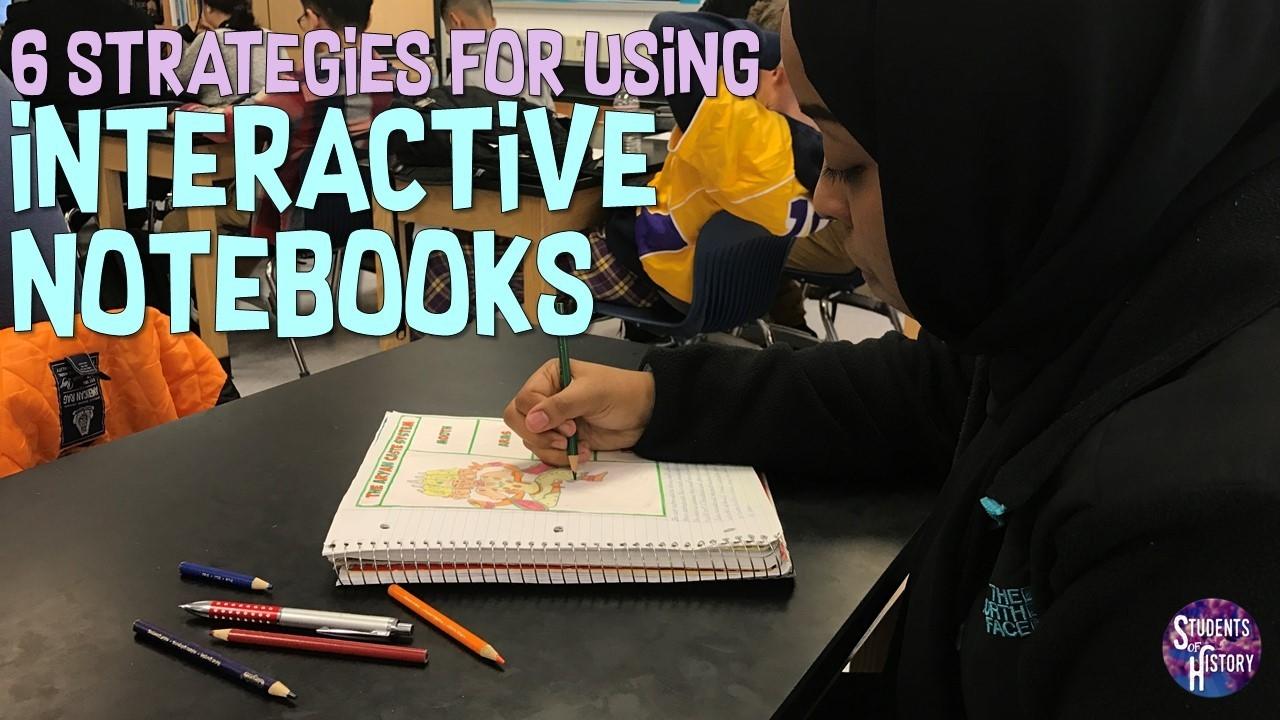
Interactive notebooks are an amazing tool to use in the classroom. The graphic organizers can help students categorize and better understand content. Students also almost always enjoy making them!
The hands-on and creative aspect of interactive notebook pages lend themselves well to fostering student creativity and allowing students to demonstrate their understanding of important concepts. I started using them years ago and gradually made them more detailed and interactive as the years went by.
I use a number of different resources in my classroom, but for years have experimented with different ways of using interactive notebook activities. At first, I would go through them together with students. However, I wanted a more student-centered classroom and sought ways to allow students more freedom to interpret our content. This led me to having students working on the pages either independently or together and then sharing what they created.

However, I still see the benefits of wor...
Five Ways to Make Awesome Stations Lessons!
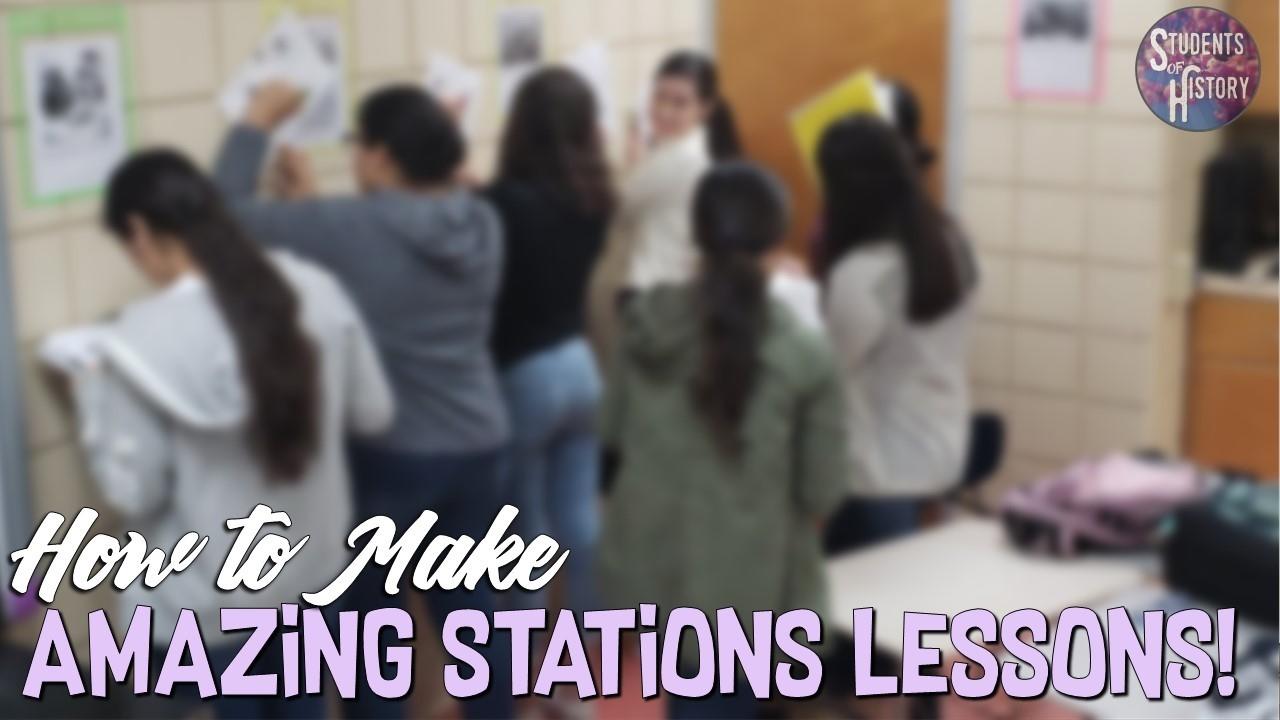
Stations lessons are some of my favorite activities in my social studies classes. They're a great way to get kids up and moving around the room and that's more engaged in whatever topic recovering. Instead of just sitting at their seats at traditional way and taking in material, they're able to move around the room and learn.
They also work with any subject area and any unit you might be covering in history. They can be higher level, with students analyzing more advanced texts and sources at each station, or feature simple political cartoons, maps, or short excerpts at each station for lower level classrooms.
There’s no set template that you need to use for all stations lessons, but here are 5 ways to make your stations lesson plans rock!
1) To Time or Not to Time the Stations?
Stations can definitely vary in the structure. You might want to set a timer for a specific amount of time that students spend at each station. Or, it might work best if students are free to spend however...
6 Awesome Insta-Worthy Classroom Activities

As all teachers know, it is a long school year. Over the course of 180 school days, there are bound to be point where both you as a teacher, and the students, are burned out, bored, or just otherwise not excited about the curriculum.
It’s at points of the year like that where I try to infuse something different or fun to break our class out of that monotony and infuse some much needed life into the classroom. At first, I tried just taking the class outside or just some fun activities. However, I’ve since developed a variety of engaging ways to bring a little spice to whatever lesson we need to cover.
I was inspired by the rise of the “Insta-worthy” museum to bring these together and share with you here. Insta-worthy museums and exhibits cater to the visual appeal of Instagram and people wanting to document their experiences. In the same way, students are drawn to these same kinds of experiences and I’ve often seen kids snapping pictures when we do these lessons.
These are not the ...
7 Best World War 2 Activities for Secondary

Whether you teach World History or US History to middle school or high school students, one of your biggest units in the year is likely to be World War 2. The scope and impact of the war was so massive that you need at least a few weeks to cover everything. That means you need to have a wide variety of high-quality, engaging lessons to use throughout the unit.
From the causes of WW2, to the people, main events and battles, the Holocaust, the bombing of Hiroshima and Nagasaki, and the lasting impact of WW2 into the Cold War - it's a LOT to cover.
Here are some of my favorite lesson plans and activities to use with secondary students for teaching World War II:
1) Rise of Dictators Pop Up Notes
One of the first things students need to understand is the rise of dictatorships and fascism in the years before World War II. Hitler in Germany, Joseph Stalin in the Soviet Union, Benito Mussolini in Italy, and militarists in Japan all took power during the 1930s.
To teach students about t...